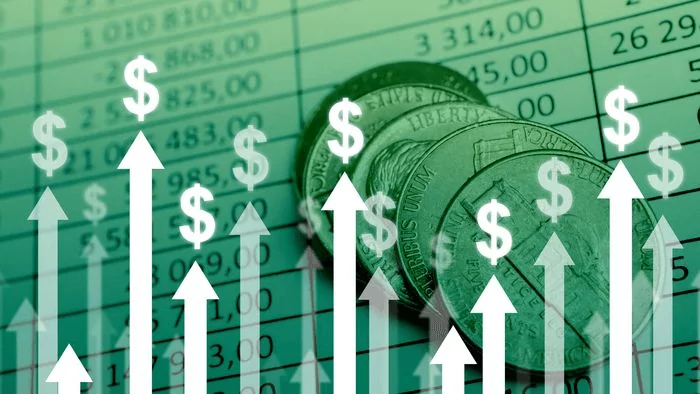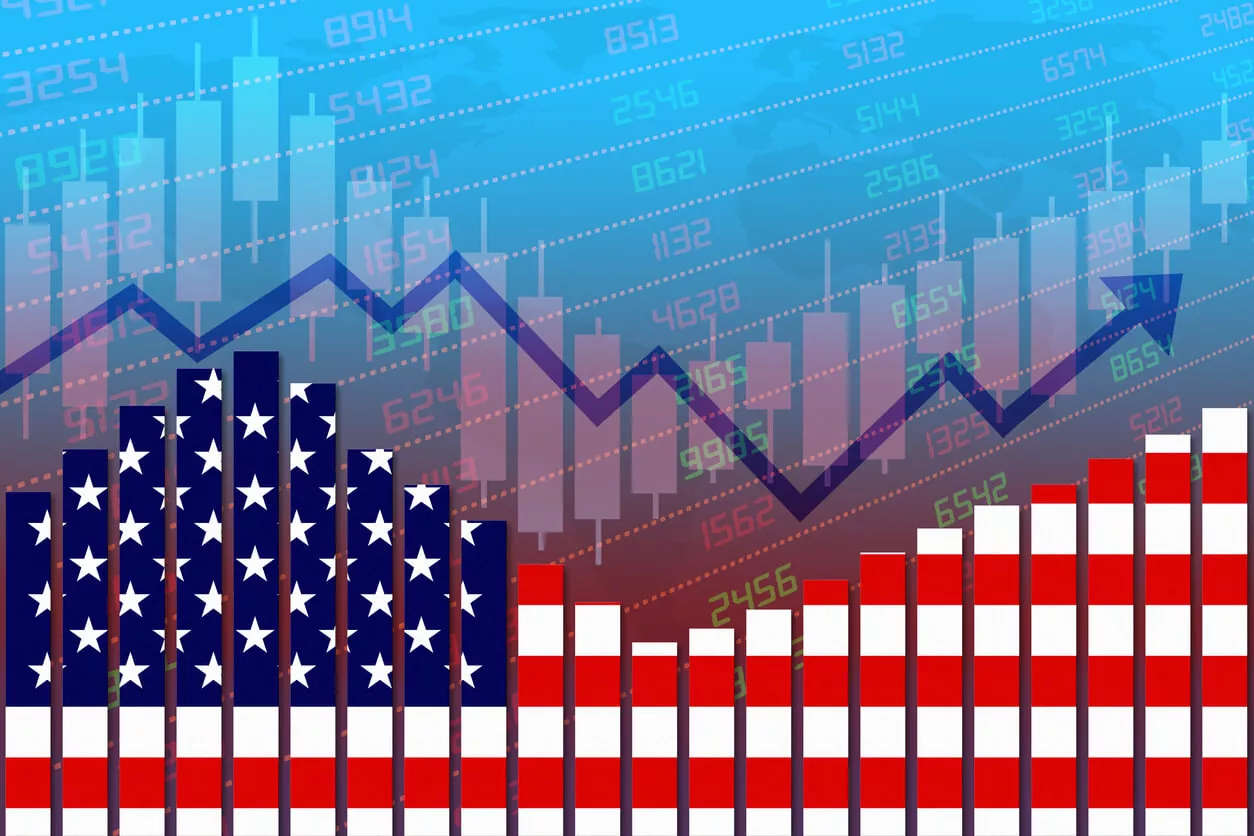
Rising inflation is a concern for many people in America. Recent insights from May 2022 revealed that the Consumer Price Index, the standard measure of inflation, rose to 8.6% in 12 months. This is the highest rate since the 1980s.
Unfortunately, inasmuch as high inflation rates are a concern for businesses and consumers, the situation isn’t going back to normal anytime soon. Experts believe that future inflation rates might even be higher than what we are witnessing now.
But what are the reasons behind the inflation problem? And why may it remain too high in the coming month? Learn more from this guide as you think about your future wealth management and financial planning.
What is Inflation?
Simply put, inflation happens when the purchasing power of money drastically drops. This means that the value of a particular currency has gone down, usually due to prices of goods and services going up.
Inflation measures how much the prices of goods and services have increased within a period. It considers a wide range of goods and services necessary for quality living, then represents their ‘inflated’ prices in a single-value percentage. The inflation rate for specific services or products can also be measured, as seen in this chart by the US Bureau of Labor Statistics (BLS).
Let’s put it into better perspective. When a country has an inflation growth of 5% in a year, a shoe that costs $10 this year will likely go for $10.05 the following year. The price difference might seem minute when considered individually. However, when you add up slight price changes per commodity and service, you’ll find that your $100 that could afford ten different items can now buy eight or nine.
Economists believe that a low and predictable inflation rate is necessary for the economy to grow. People would rather invest their money into profitable ventures than save it and watch it devalue with time. This is why the Federal Reserve has an annual inflation rate of 2%. However, when inflation gets out of control, it will affect consumers by increasing the cost of living and reducing their ability to invest, slowing down economic growth.
How Can You Measure Inflation?
There are different ways of measuring inflation, the two primary ones being Consumer Price Index (CPI) and Personal Consumption Expenditures Price Index (PCE)
- Consumer Price Index
This indicator focuses on how much consumers pay for the services and commodities they buy. The US Bureau of Labor Statistics (BLS) gets this spending data monthly from over 23,000 retail and service businesses. They analyze the prices of essential goods and services like food, gas, drugs, and tuition to determine how prices rise or fall over time.
This index can be very volatile because food and energy prices can rise quickly over time. A derivative of this index, called the Core CPI, excludes the cost of food and energy to measure ‘underlying inflation.’.
- Personal Consumption Expenditures Price Index
The Bureau of Economic Analysis (BEA) calculates this index based on how much these essential commodities and services actually cost. Unlike the CPI, the PCE takes into account other indirect costs that consumers don’t pay for, like Medicare and Medicaid.
This index measures price changes from the seller’s perspective and is less volatile than the CPI approach. The Federal Reserve’s 2% inflation target is set in terms of the PCE.
What drives inflation?
What causes inflation to rise? Well, this situation happens when there is excess money supply in the economy, which triggers drivers that lead to higher inflation. Prevalent drivers of inflation include:
- Demand-Pull Inflation
This inflation driver is triggered by the pull of demand. For instance, a country might experience high demand against low supply. Due to the high demand, sellers can raise the price of commodities and buyers will still purchase them because they have the money to do so.

- Cost-Push Inflation
This inflation driver is triggered by supply inconsistencies. Although the demand levels might not increase, an acute shortage of supply can cause producers to raise their prices. Just like in the demand-pull scenario, buyers will still get the commodities because they can.
Is the inflation rate increasing now?
Yes, inflation is high and is getting higher by the day, at a rate four times its level in 2020.
With the prevalent signs of high inflation everywhere, it will help if you reach out to a financial advisor for small business owners, especially if you are going to make the right business decisions for future growth.
Why Are We Facing an Inflation Increase?: 5 Reasons Behind It
Inflationary concerns might have you wondering, “Why does inflation increase?” There are many reasons why inflation is so high these days, including:
- Covid-19 Pandemic
Experts speculate that the primary reason for inflation in America is the excessive money supply during the pandemic. The $1.9 trillion coronavirus relief fund provided $1,400 to each household, at nearly zero interest rates.
Unable to spend all that money during the lockdown, most of it was saved up, and immediately after restrictions were lifted, a spending spree began. High demand for goods trumped companies’ ability to supply, leading to higher prices.
- Higher Demand
When consumers suddenly have more money than what they are used to, they will have more spending power. A sudden increase in spending power means increased demand for goods beyond the economy’s standard production capacity. At this point, elevated demand causes prices to rise, and buyers will have no choice but to pay higher rates for these essential commodities.


The inflationary effect of this demand-supply gap is called ‘Demand-pull’ inflation, the most common factor that drives severe inflation. This inflation can be mitigated when buyers engage in sudden wealth counseling to manage their excess funds better.
- Constrained Supply Chains
In some cases, the demand for a product or service remains the same, but due to unprecedented supply constraints, they would be scarce. For instance, the pandemic caused many factories to shut down, and freight companies reduced global shipping. Finished products have become more scarce and costly, so suppliers can charge more for goods and services regardless of the prevailing demand. The type of inflation caused by this driver is called ‘Cost-Push’ inflation.
- Anticipated Price Increase
This is a primarily psychological driver. No one wants income that does not increase even when prices go up. Hence, workers in the labor market have started demanding higher wages to align with the anticipated running inflation. Higher wages lead to increased production costs, reflecting higher prices for essentials. The economy has found itself in a wage-price spiral that will keep prices on the rise if nothing mitigates it. This is known as ‘Built-in inflation.’
- The Russia-Ukraine war
The war in Ukraine has cut into the global supply of energy and food. Ukraine is a top leading producer and exporter of grains and oilseeds in the global market, while Russia is the third-largest oil producer. Importation bans on Russia and limited agricultural production in Ukraine have led to the increase in inflation in countries because of the constrained supply of both commodities.
How Does Inflation Affect the Economy?
Inflation going up has different effects on the economy. On the brighter side, it can affect the economy positively because consumers will spend more than they save, hence boosting economic activities. Also, people who own tangible assets will see their assets increase in price and resale value.
On the other hand, a sudden significant increase in inflation will mean that consumers have to pay more for services and commodities, companies will have to deal with higher running costs, and there will be distortions in prices.
You may want to consider hiring a financial expert, such as a fee-only financial advisor in Portland, Oregon, to mitigate how much you are affected by the inflation risks in the economy.
What Happens When Inflation is Too High?
Prolonged and elevated inflation risks can result in hyperinflation. Besides stiff commodity prices, hyperinflation can lead to adverse economic situations such as:
- Fewer Exports
Countries and international businesses will be hard-pressed to trade because of inflated prices of services and goods.
- Reduced Savings
People will not save anymore because their money runs the risk of getting devalued with time.
A lack of savings means less money for businesses to borrow for capital products and technology investments. Since these investments benefit the economy’s growth, a reduction in savings can lead to economic stagnation.
- Poor Investment Decisions
Another result of inflation is that people tend to make financial decisions that further exacerbate the problem. Typically, hyperinflation causes the prices of existing assets like gold, silver, real estate, etc., to skyrocket. Most people invest in these assets because of their inflated value and high price volatility.
Investments in these existing assets do not help the economy or create employment. However, they help diversify your investments and potentially lower the impact of inflation on asset prices.
- Increased Taxes
Taxes can increase and reduce the quality of living and purchasing power of companies and individuals. Unless the government adjusts the tax rates to align with the new PCE inflation index, people will find that their old tax rates will be taking more out of their source of income than in previous years.
Experts in tax estate and financial planning for the elderly and even younger citizens are in a great position to help with tax estimations in times like these.
- High-Interest Rates
A reduction in the value of money will lead financial institutions, especially centralized banks like the Federal Reserve, to increase interest rates. High-interest rates discourage borrowing, which lowers the prevailing money supply.
- Recession
High inflation can lead to a slowing of the economy and a recession. Recessions are one of the primary inflationary concerns and the hardest to deal with while prices are rising.
How High Will Inflation Go in the US?
How bad will inflation get? It is hard to predict currently.
Back in July 2021, the inflation rate was at 5.4%, and policymakers believed things had peaked and would get back to normal because the supply chain constraints were being cleared, and factories resumed production again. But we have actually seen the opposite as the rate has increased instead.
What Are the Predicted Inflation Rates for 2022-2023?
Forecasters believe the worst is behind us, and there will be a downturn in the inflation rate. But that will not be coming soon. Getting back to a 2% annual inflation rate will be slow and arduous. Analysts predict a reduced 7.8% inflation rate by Q3 of this year, but that is still high. More extensive Federal Open Market Committee predictions see the rate getting down to 2.7% by 2023, still higher than the preferred annual rate.
Will inflation stop people from retiring? That remains to be seen. Consulting an expert in retirement planning in Portland, Oregon, can help you find out if you’re on track or need to make some changes.
What Are the Risks for Consumers and Businesses?
A high inflation rate means difficulties for consumers and businesses alike, although not all will be affected the same way. People with high income can always decide to stop getting non-essentials and save any extra money for essential commodities. However, lower-income households that only spend on essentials will buy less food and necessary items.
Businesses that provide non-essential commodities will see a drastic impact on their sales. Those in industries with multiple alternatives will also be affected, as well as companies without brand power.
The risks consumers could face include:
- Increased interest rate/ unwillingness to borrow money
- Unemployment
- Spending more for less
Businesses will likely encounter:
- Increased manufacturing costs
- Higher wage expectations
- Reduced sales
- Supply chain issues
Wrapping It Up
Understanding how inflation occurs and how to prepare for the coming inflation is critical at this time. At Interactive Wealth Advisors, a Portland, Oregon investment management agency, we can help you prepare for the days ahead. Contact us if you’re looking for the best way to ride the economic downturn.


